Memories of Shuso Hossen Ceremonies
Leading up to our second Shuso Hossen Ceremony on May 21, 2023 we are republishing a series of blog posts from Autumn 2019 that were created in honor of Rev. Shokai’s Shuso process.
This text is based on interview on Sunday, October 20 where novice Zuisei and Revs. Jay Rinsen Weik and Karen Do’on Weik Osho chatted about their experiences with Shuso students, and becoming Shuso students, as well as their work guiding Shokai through the Shuso preparation process this Ango, and what it will be like for BTT to have an acknowledged Shuso student after the ceremony.

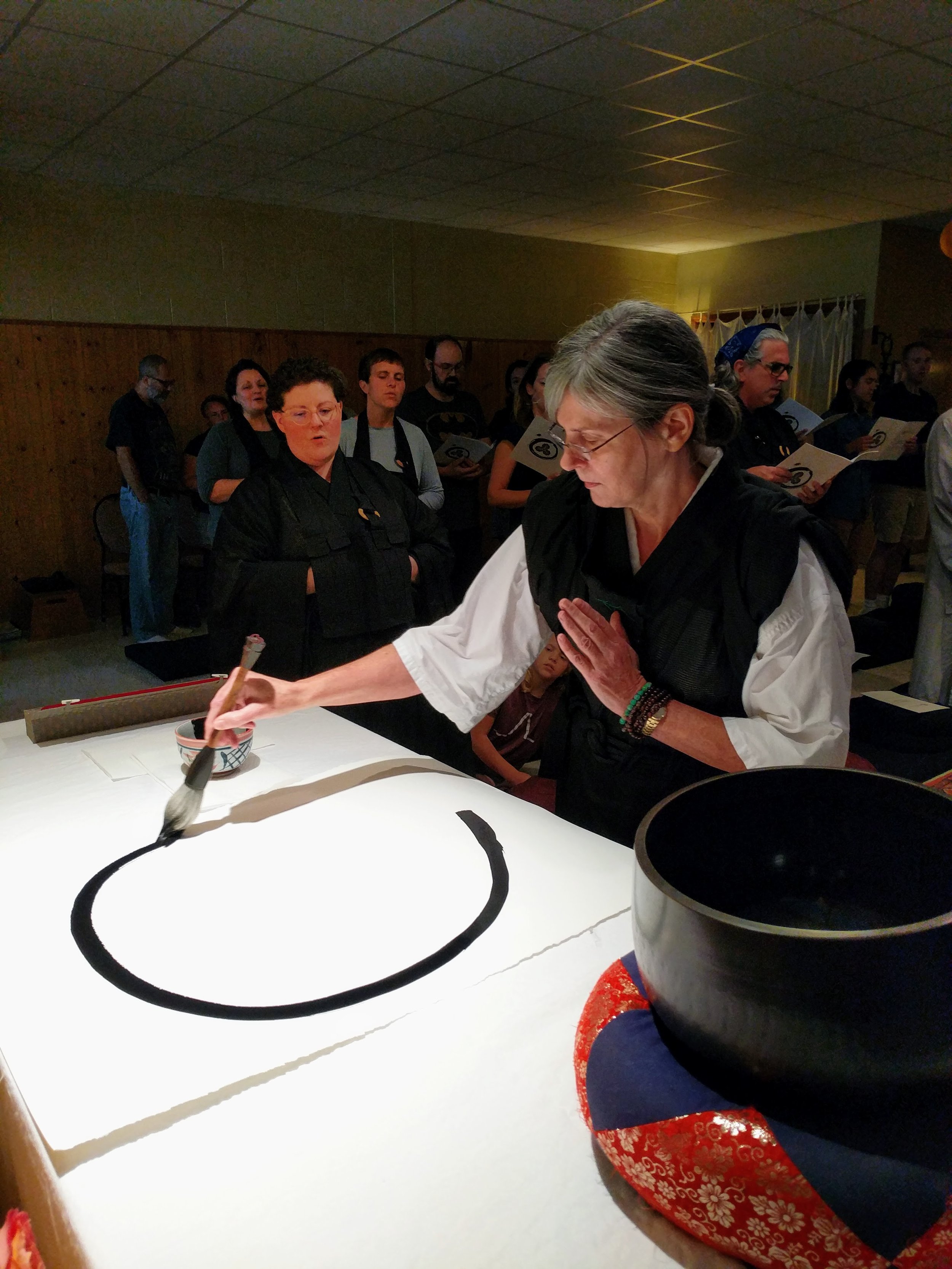
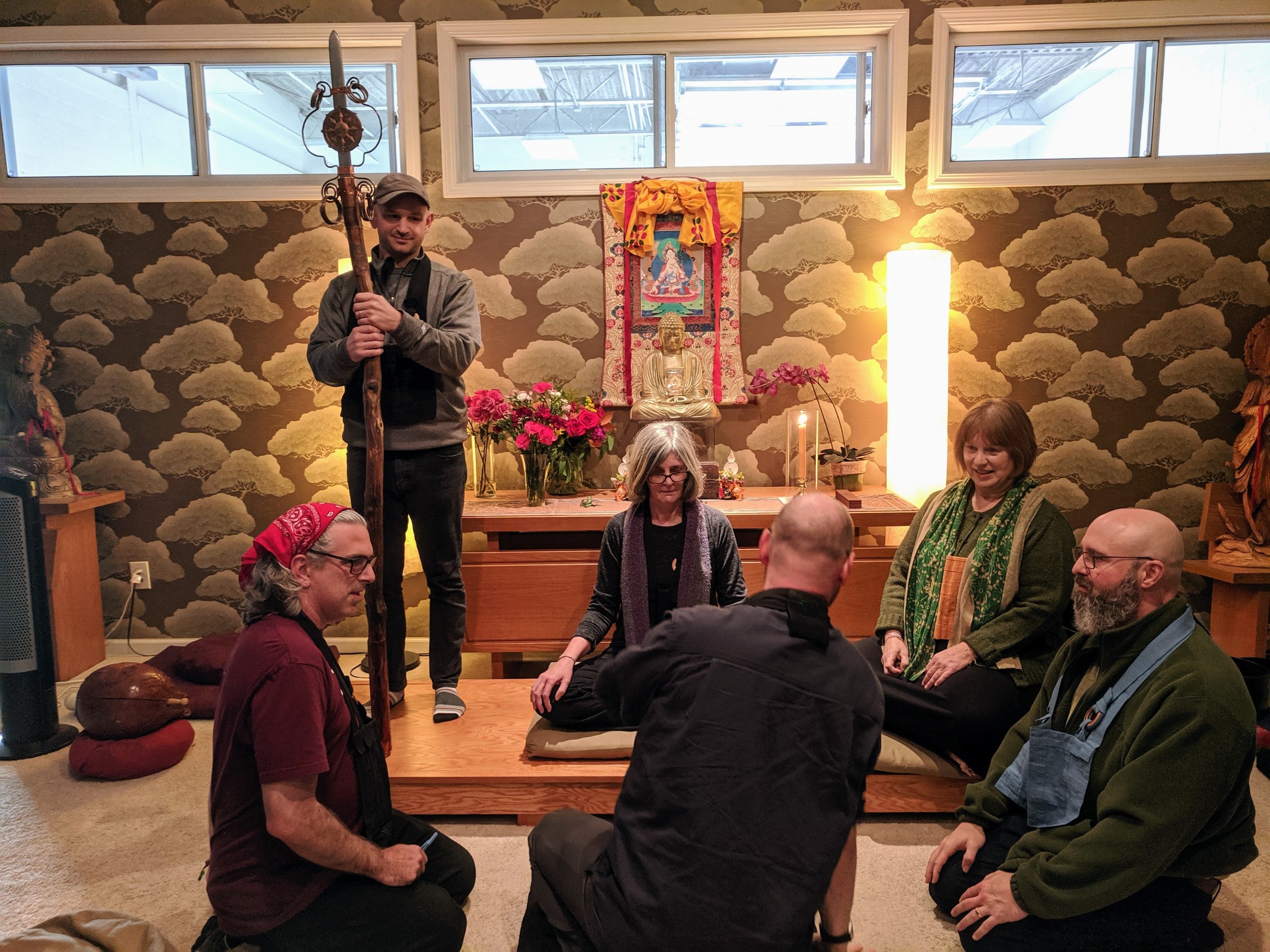
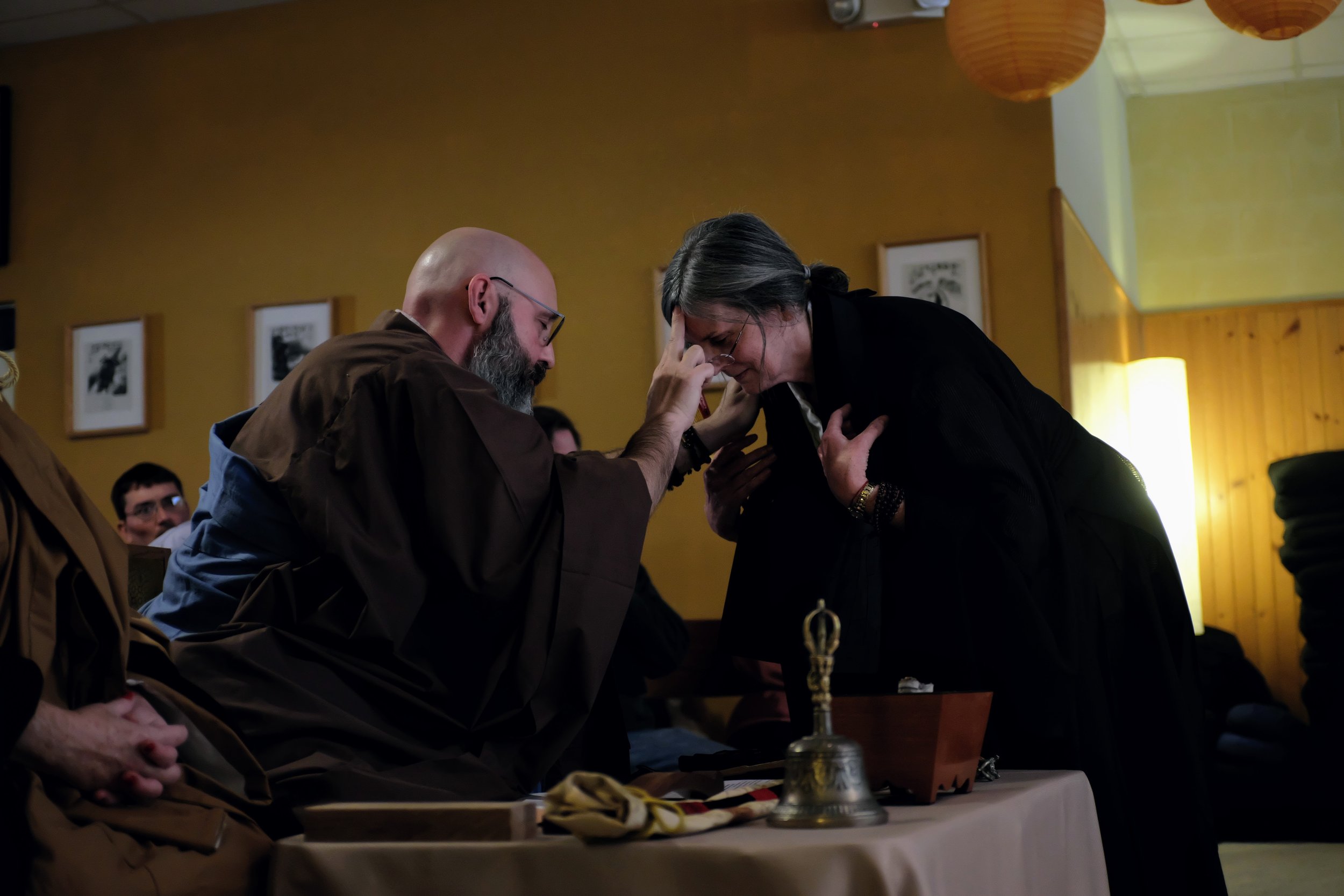

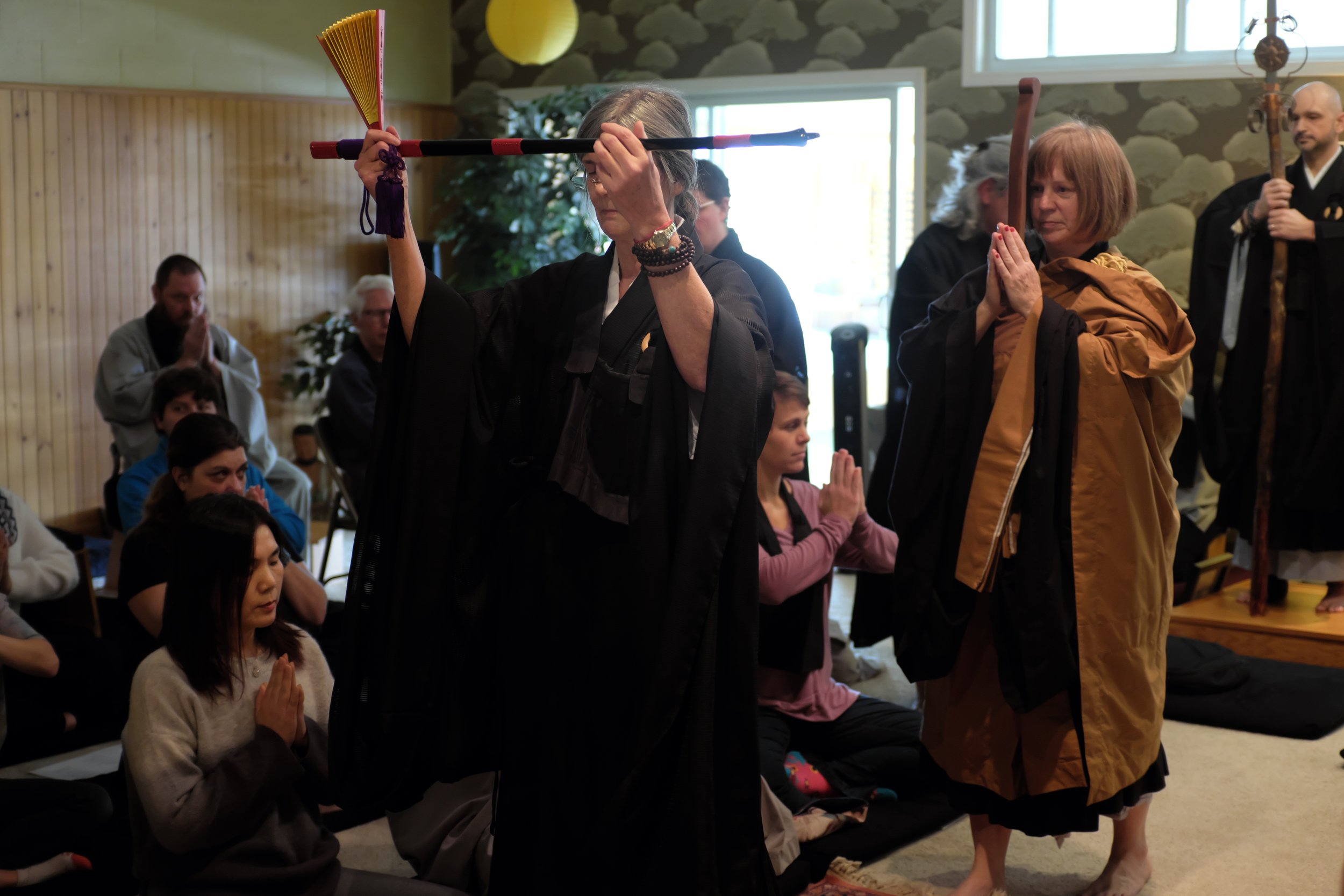
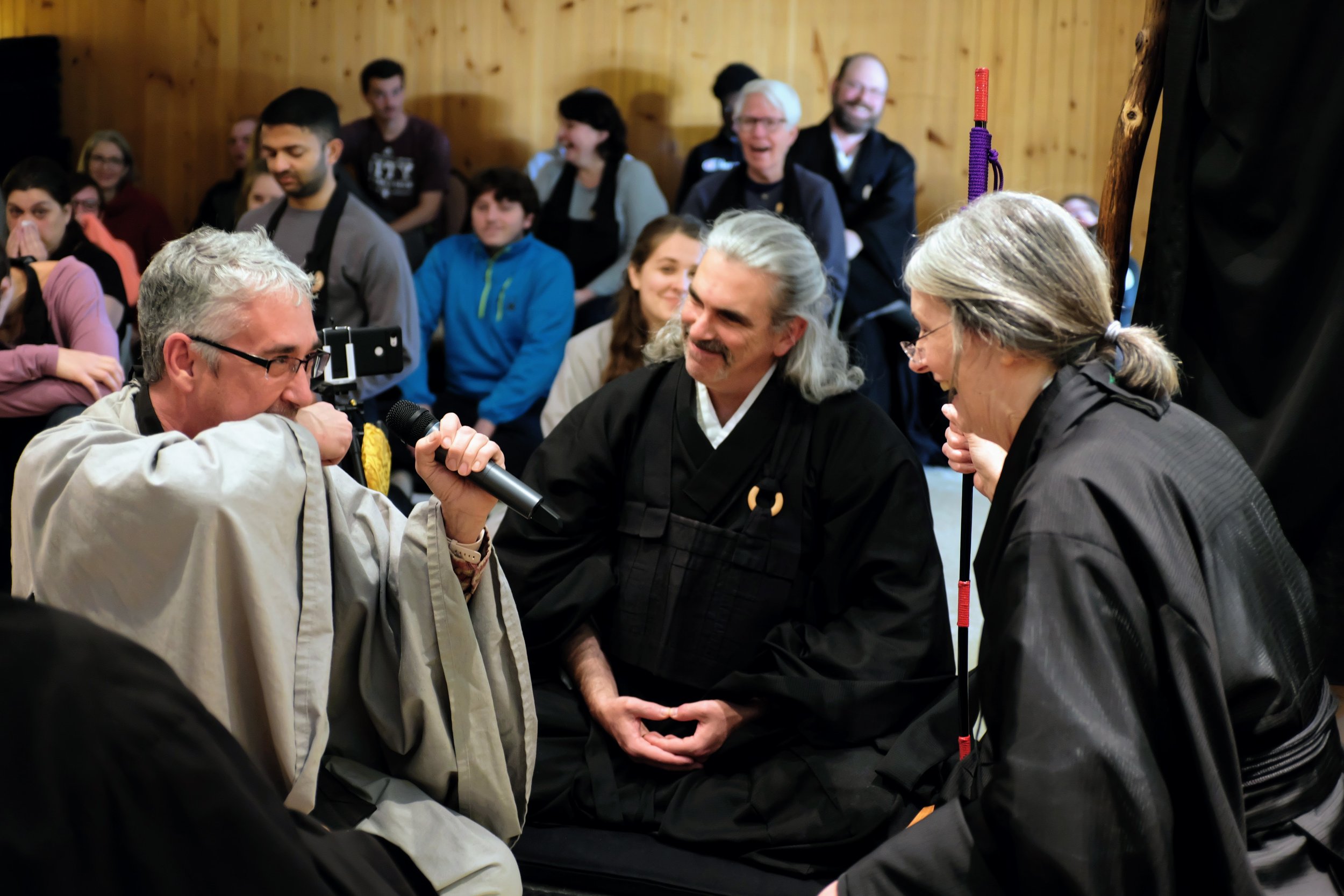
Zuisei:
Rinsen Roshi, Do’on Osho - thank you so much for taking the time to share your memories of becoming Senior Students (Shuso) of Zen and your thoughts on training Shokai, BTT’s first homegrown Shuso candidate. This Ango, the closing ceremony (Sun. November 17) is going to be a really big moment for the Sangha because we are going to have our first “home-grown” student, Shokai leading Dharma Combat and officially becoming a shuso student. You’ve explained to the Sangha before that Shuso translates as “chief disciple” or “head seat” and you have said a little bit about what it means. When did you first hear the term “shuso” in your training? What was your impression you were a “little baby Dharma student”, and how did it change over time?
Rinsen:
My first teacher, Daido Roshi, established Zen Mountain Monastery (ZMM) as more of a Zen arts center than a traditional monastery in 1980. By the time I showed in 1987, it had morphed into a monastery. So there had been a lot of evolution in what was expected of students and by the time I got there the training matrix was pretty well in its fully formed state.
Rinsen:
One of the first Shuso Hossen ceremonies I attended was for Ron Hogen Green, now Sensei, who is now a lay teacher primarily at ZMM’s Fire Lotus Temple in Brooklyn [Zen Center of New York City]. I remember that when Hogen was introduced as the Shuso for the upcoming Ango, he had already completed training in another lineage. He felt his understanding to be insufficient, and -- really admirable! -- he decided to check his understanding with different teachers. Hogen found his understanding to be lacking in light of his encounter with Daido Roshi, and he wanted to train further and became Daido Roshi’s student. I have a lot of respect for that. Usually a student is at the 4th stage of training when they become a Shuso. Hogen was already on the sixth stage when he started training with Daido.
Rinsen:
When I saw the whole process of students becoming shuso, I got to see how not only was the Teacher powerful, but there was a lot of power in the Sangha. I was very impressed to see not only that the Teachers themselves existed, but they'd also successfully attracted students who had attained such depth through the training process.
Rinsen:
Seeing people go through the process and be acknowledged gave me a lot of encouragement and a lot of hope. And -- I found them to be people I could relate to. They were a lot closer to my experience level than Roshi. Roshi was not a “distant person” but his level of experience was so far beyond mine at the time. Of course I was eager for any chance I had to be influenced by Roshi, but I found that the Shuso students in the Sangha also provided a really important source of encouragement for my practice.
Do’on:
The first Shuso I saw was Horace (Kaishin) at Zen Mountain Monastery, who actually became Isabella’s Buddhist godparent. He had this really great way of being in the Zendo. I remember people randomly popping up in the Zendo to ask him questions, and he fired off answers to all these questions. I actually popped up and asked a question -- I think that was the first time I ever spoke in Daido’s zendo.
Rinsen:
Yeah, there was not a lot of speaking in the Zendo. Not like ours.
[Group chuckle!]
Do’on:
I remember [the Dharma Combat] being very dynamic. The way people were asking questions and the way he was answering, I felt: “wow! Everyone is practicing the Dharma! Actual Dharma practice is showing up!” It was very cool.
Rinsen:
One thing that was really impressive to me was that Dharma Combat is very much an “alive experience”. You [the Shuso] don’t know what is going to be asked and they [the Sangha] don’t know how you are going to respond. That aliveness and that alive quality of the interaction was so encouraging to me, because really life is like that: coming at you from all directions and you don't know what is going to happen next. And also the humor, there is always a ton of humor that ends up coming out and I feel like that is really important.
Do’on:
I think another part of it is that the Zendo was so disciplined, and you could see how the spontaneity, the humor, and the joy of Dharma Combat really came out of that disciplined, concentrated, very crisp practice. This has really stayed with us.
Rinsen:
Yes, and you know, I'm pretty sure that if we had encountered [the Shuso Hossen ceremony and Dharma Combat] in its more ossified forms -- where it is a pre-scripted ritual where people reenact an exchange literally word-for-word -- I don’t think it would have been nearly as compelling or interesting.
Do’on:
[The unscripted form] is really nourishing for people -- it’s actual expression of the Dharma.
Rinsen:
Yes. There’s a place for scripted moments, like our Jukai Ceremony, where it works great as an empowerment and an initiation. But with a Shuso, this is a person who the Abbot and Teachers have confidence that person’s Dharma Eye is open enough to start to be of use to encourage the Sangha in a teaching capacity.